Pollution of Water
Learning Outcomes
By the end of this lesson, students will be able to:
-
Introduction – What is Water Pollution? Causes, Effects & Prevention
-
Strategies for Identifying Water Pollutants
-
Identify environmental & health impacts of water pollution.
-
Water Pollution- Some important ways to prevent & control.
Introduction to Water Pollution
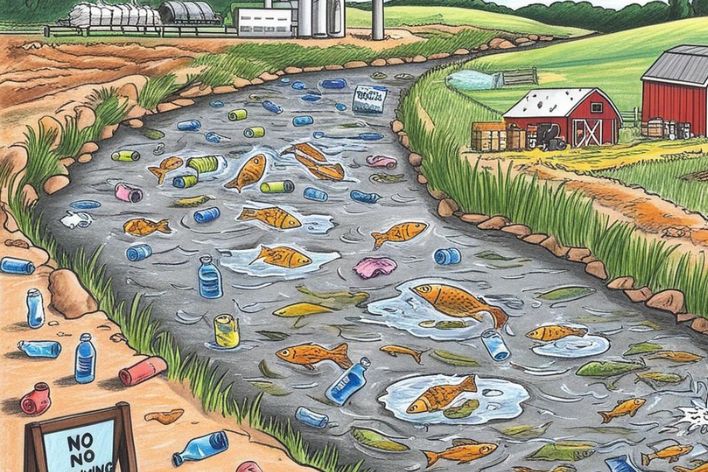
One of the most essential resources on the planet is water. All forms of life, humans, animals, & plants, require it to survive. One major environmental issue that threatens our health and ecosystems is water pollution. Water pollution is the contamination of bodies of water like rivers, lakes, oceans, & groundwater with harmful substances. This pollution can cause devastating As social and environmental issues.
Understanding Water Pollution
Water pollution can be defined as the contamination of water bodies which makes the water unsafe or unfit for use. These contaminants are either chemicals, waste products, or microorganisms that reduce the quality of water. Water pollution impacts drinking water supplies, recreational waters, and aquatic habitats.
Why is Water Pollution a Problem?
Water pollution is risks in bunches:
-
Health Hazards: Contaminated water can cause serious health problems like gastrointestinal diseases, cholera, dysentery & many infections. Polluted water can also lead to prolonged health issues.
-
Environmental Degradation: Polluted water bodies can be harmful to marine life due to low oxygen levels and toxic substances. This causes death of fishes & other organisms.
-
Economic Impact: Water pollution can impact tourism and industries that depend on clean water, fishing, and the like. Polluted waters can also be costly for communities to clean up.
-
Ecosystem Disruption: Polluted waters affect ecosystems by changing habitats & lowering biodiversity. It impacts marine life, as well as the animals that rely on these ecosystems for sustenance.
Causes of Water Pollution
Water pollution is the result of many human activity & some natural process. Here are some common causes:
1. Industrial Discharges
Like so many industries that dump unfiltered waste into rivers & lakes. These include chemicals, heavy metals and other toxic substances that can pollute water supplies.
-
Factories that dump untreated wastewater into nearby rivers, for instance, can be polluters of consequence.
2. Agricultural Runoff
So these fertilizers and these pesticides allow farmers to grow more crops, in less time. Those chemicals can wash into nearby streams and rivers in rain & contribute nutrient pollution.
-
Agricultural runoff from intensive farming practices, for example, can cause algal blooms in lakes.
3. Sewage Disposal
Release of untreated household & industrial effluents containing pathogenic microbes into water bodies may pose a serious health risk.
-
Example: In many developing countries, raw sewage is discharged untreated into rivers.
4. Oil Spills
Accidents involving oil tankers or drilling platforms can lead to catastrophic pollution of seas, coastal zones.
-
For instance, The 2010 Deepwater Horizon oil spill released millions of gallons of oil into the Gulf of Mexico, where it did widespread damage to marine organisms.
5. Plastic Waste
For instance, plastic goods that are not appropriately disposed of may end up in water bodies and endanger marine animals.
-
For decades before & since, sea creatures mistake plastic for food — just like jellyfish.
6. Mining Activities
It can even leach heavy metals & toxins into local water supplies from mineral extraction.
-
Example: Dirty water produced from mining sites can wash poison — such as arsenic — into rivers.
Types of Water Pollutants
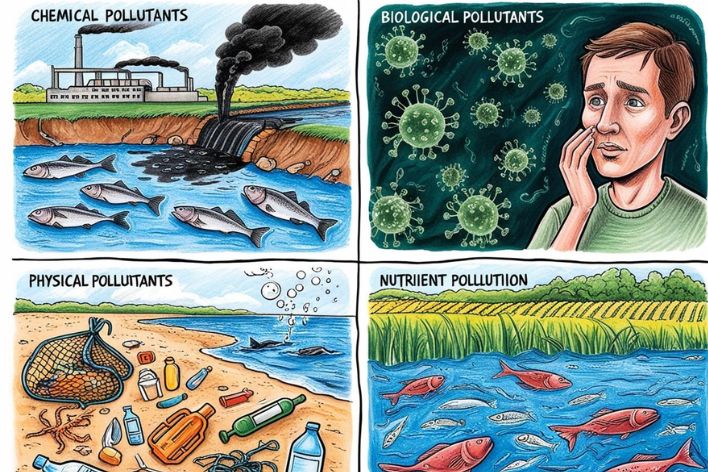
The nature of water matter & influences the type of contaminant:
|
Type of Pollutant |
Description |
|
Chemical Pollutants |
Includes heavy metals (like lead & mercury), pesticides and industrial chemicals that can be toxic to humans & wildlife. |
|
Biological Pollutants |
Carriers (like bacteria, viruses, and parasites) that may lead to diseases like cholera & typhoid fever. |
|
Physical Pollutants |
Wildlife, marine life, & the plant life within the water body and the surrounding area are affected by plastics & metals. |
|
Nutrient Pollution |
The eutrophication phenomenon (nutrient are nitrogen & phosphorus)Semantic Scholar. |
Chemical Pollutants
Chemical pollutants are those toxic substances which enter into the water bodies through different pathways:
-
Heavy metals: Lead, mercury, cadmium & arsenic — poisonous waste products, even in very small amounts. Are often caused by emissions from industrial sites or mining.
-
Pesticides: Common agricultural chemicals that are made to kill pests wash off into streams after it rains.
-
Industrial Chemicals: Factories discharged solvents, or other chemicals, directly into rivers or streams, untreated.
Biological Pollutants
Biological contaminants are living organisms that can contaminate water:
-
Bacteria: Some do nothing; others (E.coli) can cause to serious illness.
-
Viruses: Analyzing why drinking water that contains waterborne viruses such as hepatitis A can cause disease.
-
Parasites: If ingested in contaminated water, organisms like Giardia can cause gastrointestinal infections.
Physical Pollutants
Physical pollution type mostly consists of solid wastes that give excess solid wastes to these water systems distorting equilibrium:
-
Plastics: These include: single use bags, bottles, fishing nets & other items that are hazards to marine life.
-
Metals: Disposing of old appliances & construction debris in arre clean rivers can kill wildlife habitat.
Nutrient Pollution
Nutrient pollution, which occurs when a waterway has too much nitrogen or phosphorus:
-
Source {not fit niche} Ratio of farmed covers used for biodynamics is the greatest cause of nutrient pollution that causes toxic algae blooms & more.
-
impact: Eutrophication, from excess nutrients triggering algal bloom that decays and drains water Of oxygen.
The Effects of Water Pollution
Water pollution affects the environment, wildlife & human health in many ways:
1. Impact on Aquatic Life
Contaminated water can suffocate fish & other cell dwellers by depriving the creatures of oxygen, or poison them with chemicals.
-
Example: Algal blooms can cause fish kills, for example, by using up all the supply of oxygen in lakes or rivers.
2. Human Health Risks
Unsafe drinking water can cause a range of diseases, including cholera, hepatitis A, dysentery & other gastrointestinal diseases.
-
Example: In the case of floods, for example, bacteria on the untreated river water can generate organisms that, when ingested, can cause illness.
3. Ecosystem Disruption
Water pollution disrupts ecosystems by altering habitats, reducing biodiversity, & affecting food chains.
-
Example: The decline in fish populations due to pollution affects birds that rely on fish for food.
4. Economic Consequences
Altered Food Webs & Less Biodiversity: How Water Pollution Affects Ecosystems.
-
Example: Pollution that kills fish hurts the birds that eat them.
5. Algal Blooms
Excessive nutrients in the water can lead to algal blooms that produce toxins harmful to both humans & animals.
-
Example: Some algal blooms produce toxins that contaminate drinking water supplies or make fish unsafe to eat.
Real-Life Examples of Water Pollution
Understanding real-life examples helps illustrate the impact of water pollution:
Industrial Discharges
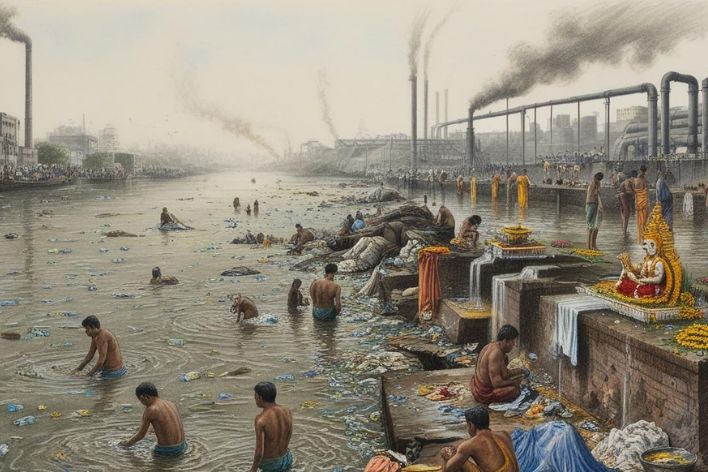
Many factories release untreated waste into rivers or lakes. For example:
The Ganges River in India is heavily polluted due to industrial waste disposal.
Agricultural Runoff
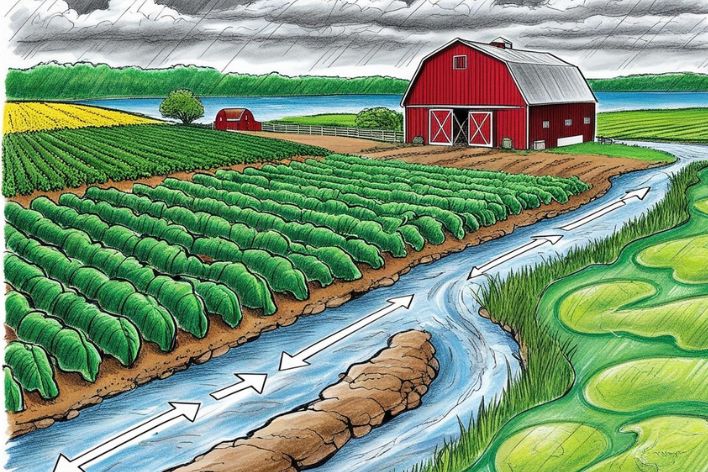
Farms often use fertilizers that wash into nearby streams during rainstorms:
Lake Erie has experienced algal blooms due to nutrient runoff from agricultural lands.
Oil Spills
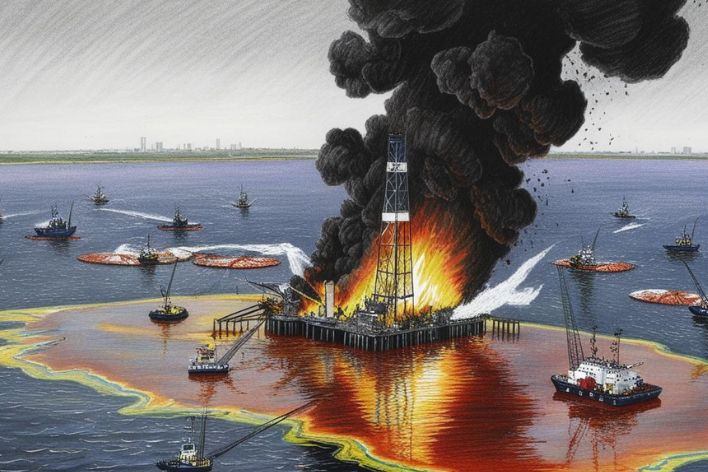
The Deepwater Horizon oil spill released millions of gallons of oil into the Gulf of Mexico:
Plastic Pollution

Oceans around the world are filled with plastic waste:
Fun Facts About Water Pollution
Here are some fun facts about water pollution:
|
Fun Facts |
|
Over 80% of the world's wastewater is discharged without treatment! |
|
The Great Pacific Garbage Patch is a massive area in the ocean filled with plastic debris! |
|
Waterborne diseases kill more people each year than all forms of violence combined! |
|
In some regions, it takes over 1 million years for certain pollutants to break down! |
Formula Chart for Understanding Water Quality
Understanding how we measure water quality is essential for identifying pollution levels:
|
Water Quality Indicator |
Description |
|
pH Level |
Indicates how acidic or basic the water is; pure water has a pH of 7. |
|
Dissolved Oxygen (DO) |
Shows how much oxygen is available to aquatic life; higher is better for fish survival. |
|
Turbidity |
Indicates how clear the water is — high turbidity means that the water is polluted or that sediment has been disturbed. |
|
Nutrient Levels |
Excess nitrogen or phosphorus means nutrient pollution is possible, which can cause algal blooms. |
Preventing Water Pollution
The fight against water pollution will take the joint efforts of individuals, communities, industries & governments:
-
Correctly disposing of waste: Ensures clean water bodies do not throw waste like plastics in rivers/lakes, always use trash bins.
-
Cut Down on Plastics: Avoid single-use plastics; carry your own bags, bottles & containers.
-
Use Eco-Friendly Products: Opt for biodegradable cleaning agents and fertilizers.
-
Volunteer at Clean-Up Drives: Be a part of local efforts for clean-up activities at parks or beaches to clean up natural areas from litter.
-
Spread the Word: Inform your friends & family about the significance of clean water and how to protect water sources.
-
Waterway Protection Legislation: Get your local and state governing bodies to pass legislation which protects waterways from industrial discharge as well as agricultural runoff.
Conclusion
Water Pollution is a critical environmental issue that threatens all life on our planet—from human beings to wildlife & whole ecosystems. Knowing what causes, what effects, how to prevent it puts the power in our hands to work towards cleaner waterways.
Together we can protect our water resources for future generations when we learn more about the consequences of our actions in the environment! Remember that every little bit helps in the battle to save the most precious resource on our planet water! It contains lesson text, example quiz questions and interactive features that aims to help Grade 5 students understand the fundamental concepts behind Pollution of Water without getting too bored and the whole thing will consists of approximately 2000 words.

